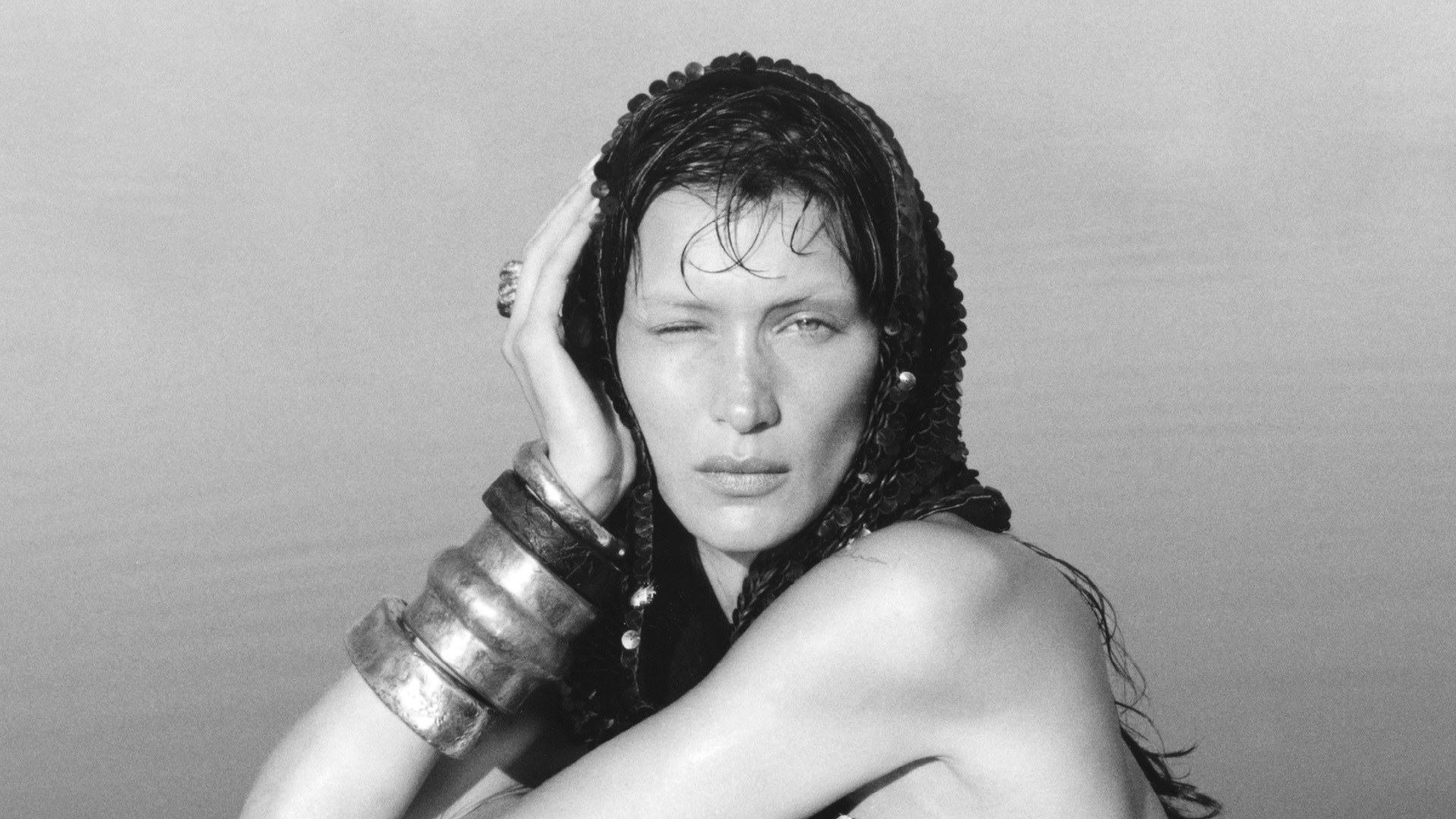This story originally appeared in i-D’s The Ultra! Issue, no. 369, Fall 2022. Order your copy here.
Gaze through the window of any luxury department store and Bella Hadid’s face – honey-toned; widely envied; near-ethereal – will gaze back. In the last few months alone, Marc Jacobs, Balenciaga, Mugler, and Fendi have cast her in their campaigns.
This ubiquity, paired with her immaculate sense of personal style, has led over 52 million people to follow her on Instagram – more than three times the number of people who live in the country her Dutch former- supermodel mother, Yolanda, was born. She is one of the most famous and influential women on the internet and in the world, and has found ways to put that fame to good use. And yet, when she answers our call on a New York afternoon, she’s barefaced with bleached eyebrows, dressed in a pink tank top and a woolly throw wrapped around her knees.
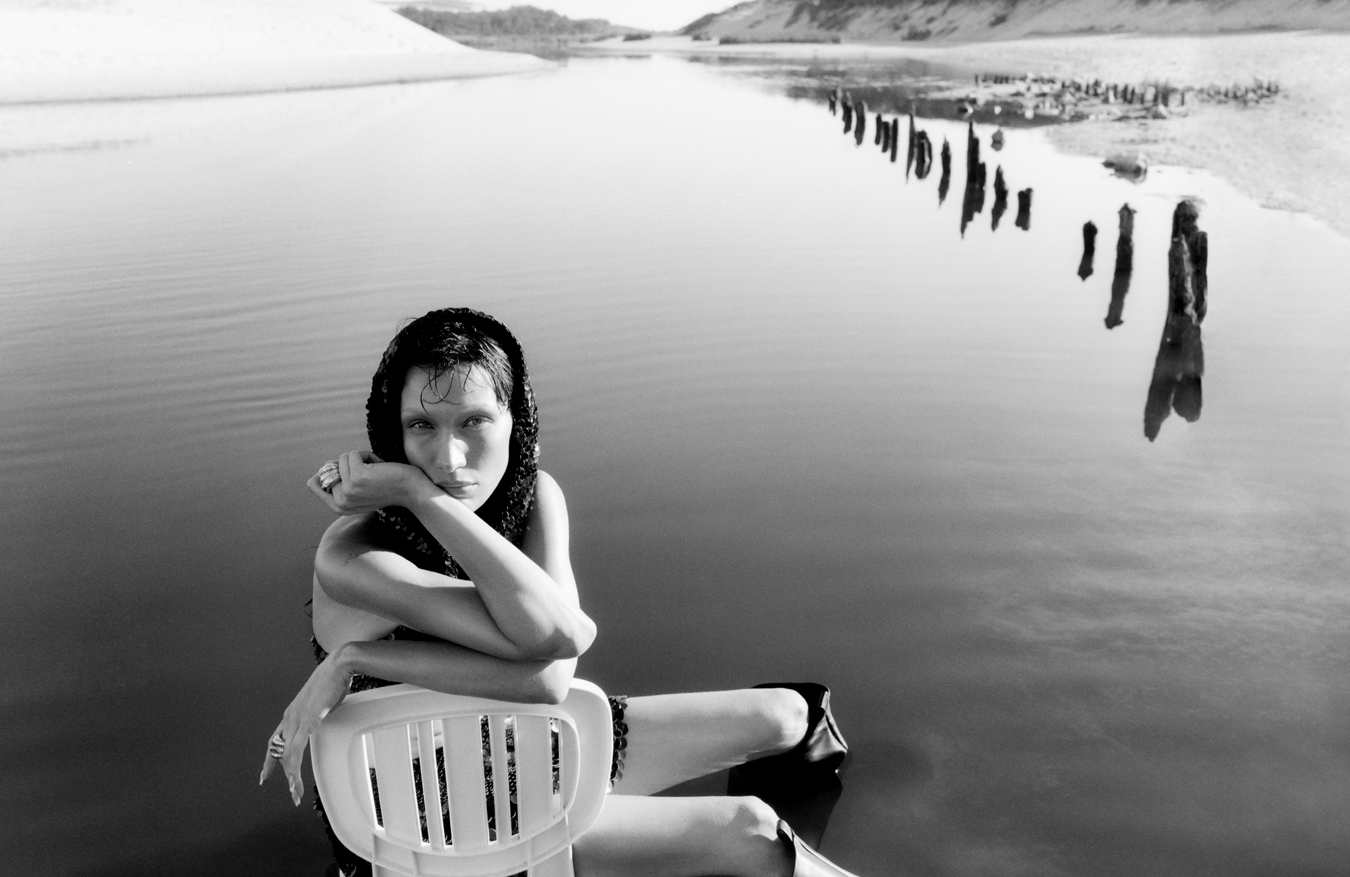
Bella’s unfussy appearance and open approach to our conversation aren’t necessarily what you’d expect to encounter from our generation’s most stratospheric supermodel. But her career has taken a turn for the unexpected: as her star power has risen, and with it the baggage of scrutiny, she has chosen to eschew the composure that often codifies the faces of fashion and instead opted for opening up – about her struggles with body image, with mental health, with the industry’s reluctance to acknowledge her Palestinian heritage. Now, whether she’s walking into the world, or onto a runway, “I can come out as Bella, instead of trying to force myself to be somebody else.”
This was not the path she expected for herself. As a teenager, she was the shy one of her siblings (the middle child, between Gigi and Anwar); hypercritical of her looks and obsessed with photography. “I always wanted to be behind the camera,” she says.

But moving to New York at seventeen, with the intention of studying at Parsons, paired with her signing with IMG Models, catalysed a career she didn’t expect but has excelled in.
She is, at her own admission, a “perfectionist”; industry hearsay frames her as a consummate professional, too. In June, she walked in Demna’s landmark Balenciaga couture show alongside Naomi Campbell, Nicole Kidman (who she describes as “a spunky, sassy, fun person”) and her friend, the pop juggernaut, Dua Lipa. But Bella almost didn’t make it: “It was a wild roller coaster getting there” she says, sighing. Yet she managed to make the affair appear seamless; pushing the chaos of losing her passport, spending twelve hours at the US embassy and then walking straight off a red-eye flight and onto a catwalk to the back of her mind. She hadn’t even had time to look in the mirror, she says, but nonetheless glided into the couture salon with the powerful grace that has become her calling card.
“My truth, who I really am, and what I stand for, is going to be seen.” Bella Hadid
She has wondered before if her efforts to do the “most” were an extension of the fact that she is a “people pleaser”. It took a long time for her to allow those traits, or her ability to put on a game face, to manifest positively rather than running her into the ground. Her powers are plentiful but, most significantly, she’s helped evolve how the fashion industry treats the conversation around mental health. She’s figured out how to avoid burnout in the future by surviving it before.
Ask her about her childhood, growing up in Malibu by the beach, going to school, and spending time with her horses in Pennsylvania, and she’ll tell you she can’t remember much of it. Part of that is down to how she felt back then, plagued not only by her own state of anxiety, but by Lyme disease, a bloodborne condition that induces extreme fatigue. “Growing up, I thought it was normal that I had this chronic anxiety and this disassociation, crying every day and not knowing who I was,” she says. “Whether it was eating disorders or smoking a pack of Marlboros since the age of fourteen, I’m like, ‘Oh, this is what all of the kids are doing’.” She stops short of calling it self-medicating. “I realised that maybe that was me trying to figure out why I felt that way. And in reality, all I needed was therapy.”
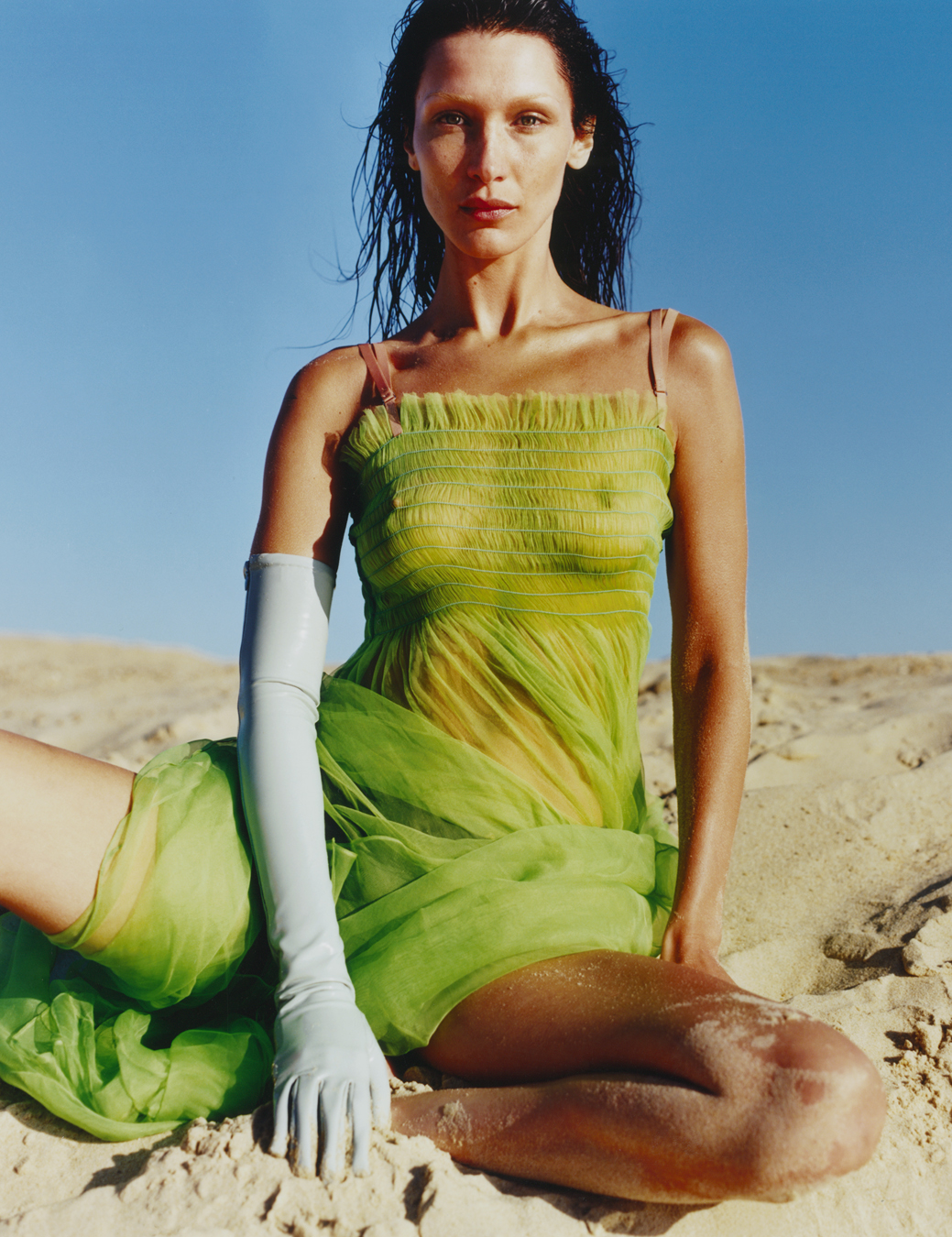
Her unchecked problems as a teenager led her into a dark place when she first entered the industry. She was depressed, disassociative, and suffered from body dysmorphia. “During that part of my life, I was so out of body, disassociating so much… I was so confused by what people saw of me. I still, even now, see comments on Instagram when I’m sitting on the couch and am like, ‘Are they talking about me?’ I don’t understand how I’ve gotten to this point where people either appreciate my work or know who I am.”
She wasn’t alone in those thoughts – in fact, it’s an endemic problem in the industry – but it often felt like it. The dichotomy was surreal: being considered one of fashion’s modern supers at the age of twenty while feeling a deep sense of discontent and malaise. “For years, I’d sit down in a make-up chair before shows, crying,” she recalls. “The hairdresser would tap me on the head like, ‘Oh, you good?’, and I’m like, ‘Yeah, well this, this…’” – she gestures the unpacking of her problems to a largely disinterested audience. “They were already onto their next conversation.”

“It was never a place where I could be open about my struggles or even have other people feel welcomed or allowed to speak about theirs as well.” It was something she felt compelled to change. In rare interviews, and on Instagram directly to her followers, she’s now frank about how she feels. In November 2021, amidst a slew of slick selfies and editorials, she posted a series of photos of her crying. “Sometimes all you’ve gotta hear is that you’re not alone,” the caption read. “I felt so misunderstood by the vision of me that people saw,” she says now. “I just didn’t want to be alive unless people knew what was actually happening to me.”
She’s noticed a change since, but certainly doesn’t take sole credit for it. Karen Elson and Carolyn Murphy, two models who had previously felt a similar sense of discontent, have become rocks for her. “They always kept me in check,” she says. “Karen’s always been very, very vocal about mental health and being able to understand body image.She was one of the first people who was really helpful for me in [understanding] that I wasn’t the only one that felt that way.”
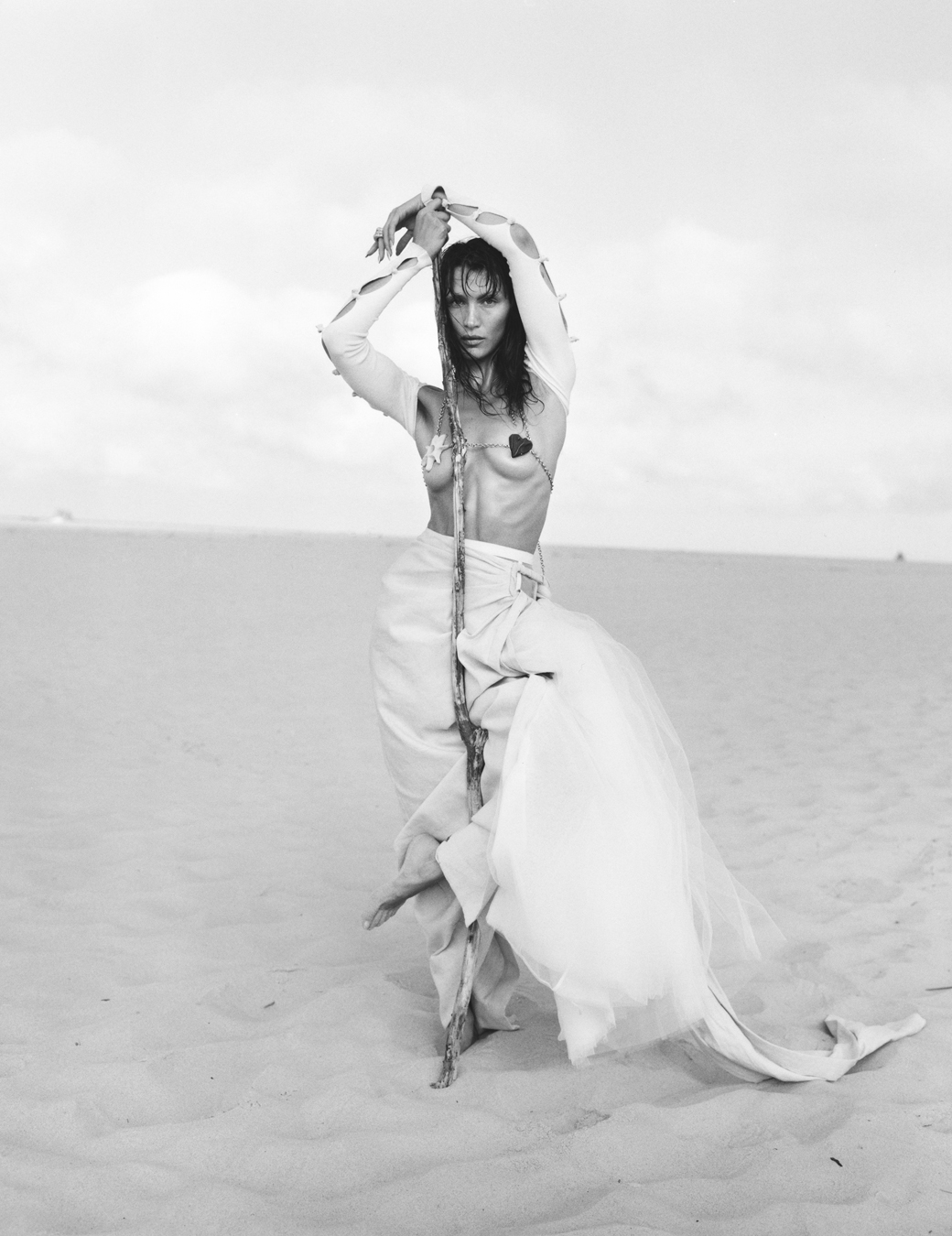
“I imagine people look at Bella and think that she’s got a charmed life, but it’s incredibly lonely sometimes when you’re travelling the world alone, always having to perform, and not wanting to complain or they’ll replace you,” Karen says to us. “I know a lot of people look up to her, which is why her honesty and vulnerability are really admirable, because she’s not just showing the fantasy, she’s being real. That to me is real courage.”
Those years of performance – becoming other people under the creative direction of fashion designers and photographers – have led her towards acting now. This year, she will make her acting debut in the Hulu series Ramy, about a first-generation American Muslim torn between his family’s culture and the nihilism of the United States. She plays a fictional character who bears similarities to Bella herself, “but not the version of me that you guys know,” she says.
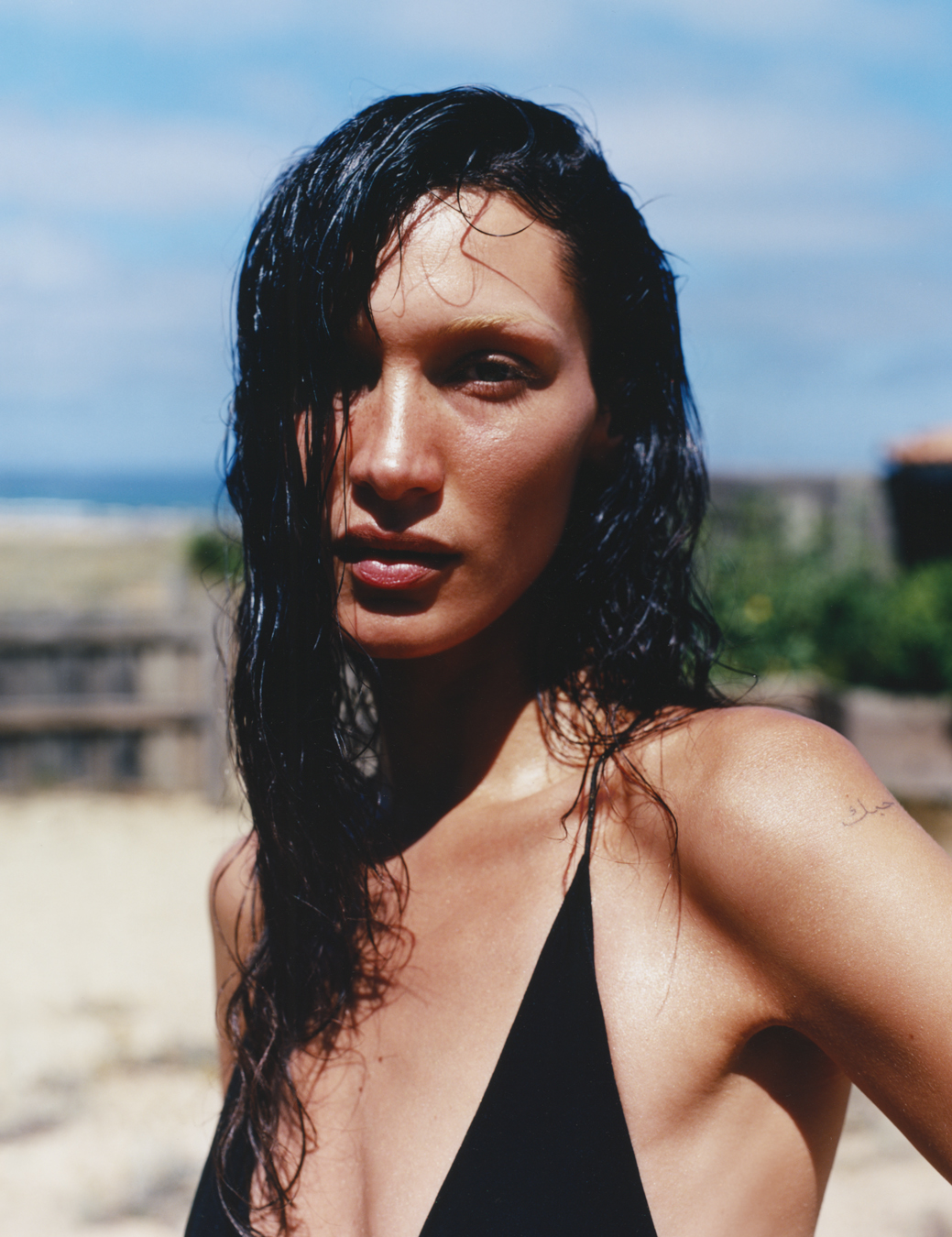
The experience was ameliorating because she’s grown accustomed to arriving on set and being the only Palestinian present. “To go onto a set and see multiple Palestinians, Arabs, and people that are cut from the same cloth as me was really, really beautiful,” she says. “I would cry when I would get to set – and not sad tears, you know?” She’d never felt that before, and learned from the experience of meeting others who might not feel represented. She says she’s, “privileged in that I can be on both sides of the spectrum, Palestinian and Dutch – but my Palestinian side, when it comes to fashion, has been for the most part disregarded.”
It’s palpable in the way Bella and her family are written about: the conscious severance of her Palestinian heritage from her highly public image feels callous. In the past, publications have framed her heritage as a point of contention – or erased it completely, like when she and Gigi donated their fashion week salaries to refugees in Ukraine and Palestine, and only the former was reported on. Bella’s father, Mohamed Hadid, is a refugee from the 1948 Palestinian exodus. The Hadid family lineage stretches back to Dahir al-Umar, a ruler of Northern Palestine in the 18th century, who was known for his tolerance of all religions.
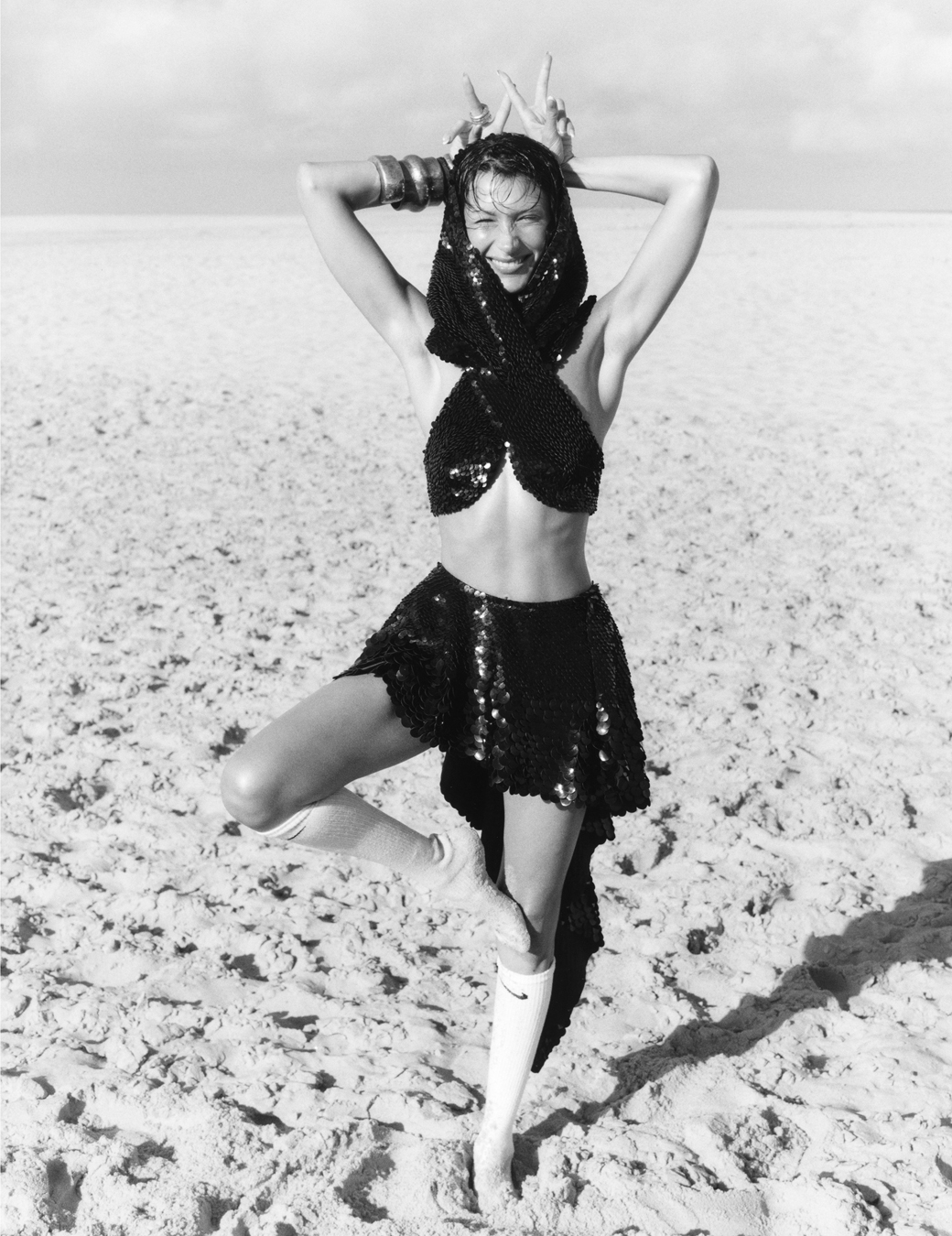
Death threats in her Instagram comments are common. A full-page advertisement paid for by a right-wing organisation in The New York Times last year falsely accused Bella, alongside Gigi and Dua Lipa, of advocating for a “second Holocaust” by siding with the people of Palestine, who Human Rights Watch claim are victims of “crimes against humanity of apartheid and persecution” by Israeli authorities.
“I’ve felt the repercussions of speaking out for the Palestinian people, but I‘ll continue doing so until it helps create real progress,” she says. “A few companies won’t work with me anymore, and a few people may think I’m crazy. But that doesn’t bother me and it doesn’t compare to what Palestinians suffer on a daily basis.”
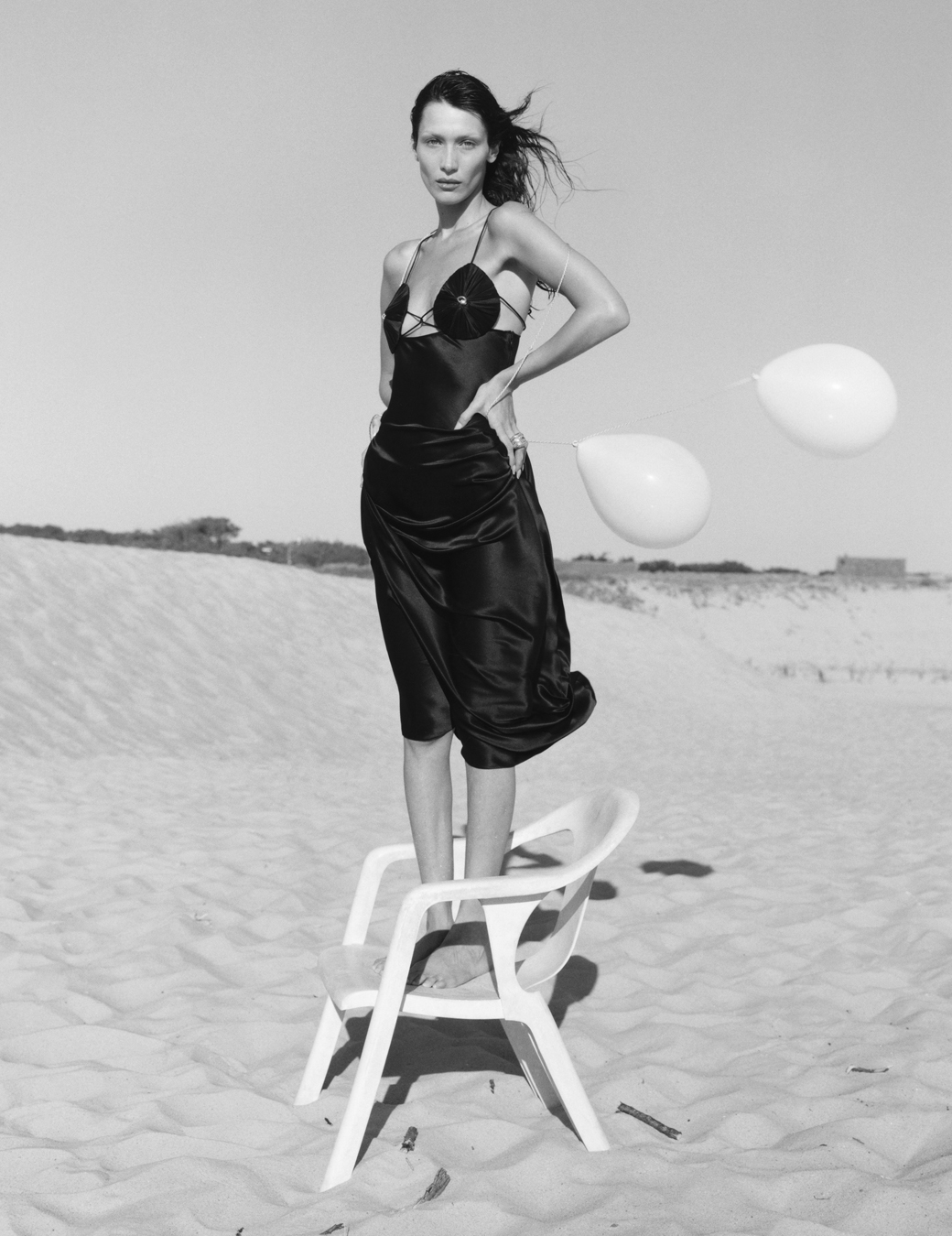
Bella insists she can slip under the radar and switch off whenever she wants to. Understanding her own happiness, now, is key. It comes to her from several sources: her niece Kai, who’s “number one right now”; good food; spending time building her own fashion archive which is getting “aggressively large”. She’ll spend hours in vintage stores scouring rails of clothing, surprising the shop owners with her dedication.
Her most prized objects? A full Vivienne Westwood look from AW93, and a bronze and baby pink Dior necklace from Galliano’s reign there. “A year later I found the matching earrings!” she gushes. “I’m just like, ‘Oh my God, her sister!’” She compares the reunion to Toy Story 2: “Friends together again, and now they have a little home.”
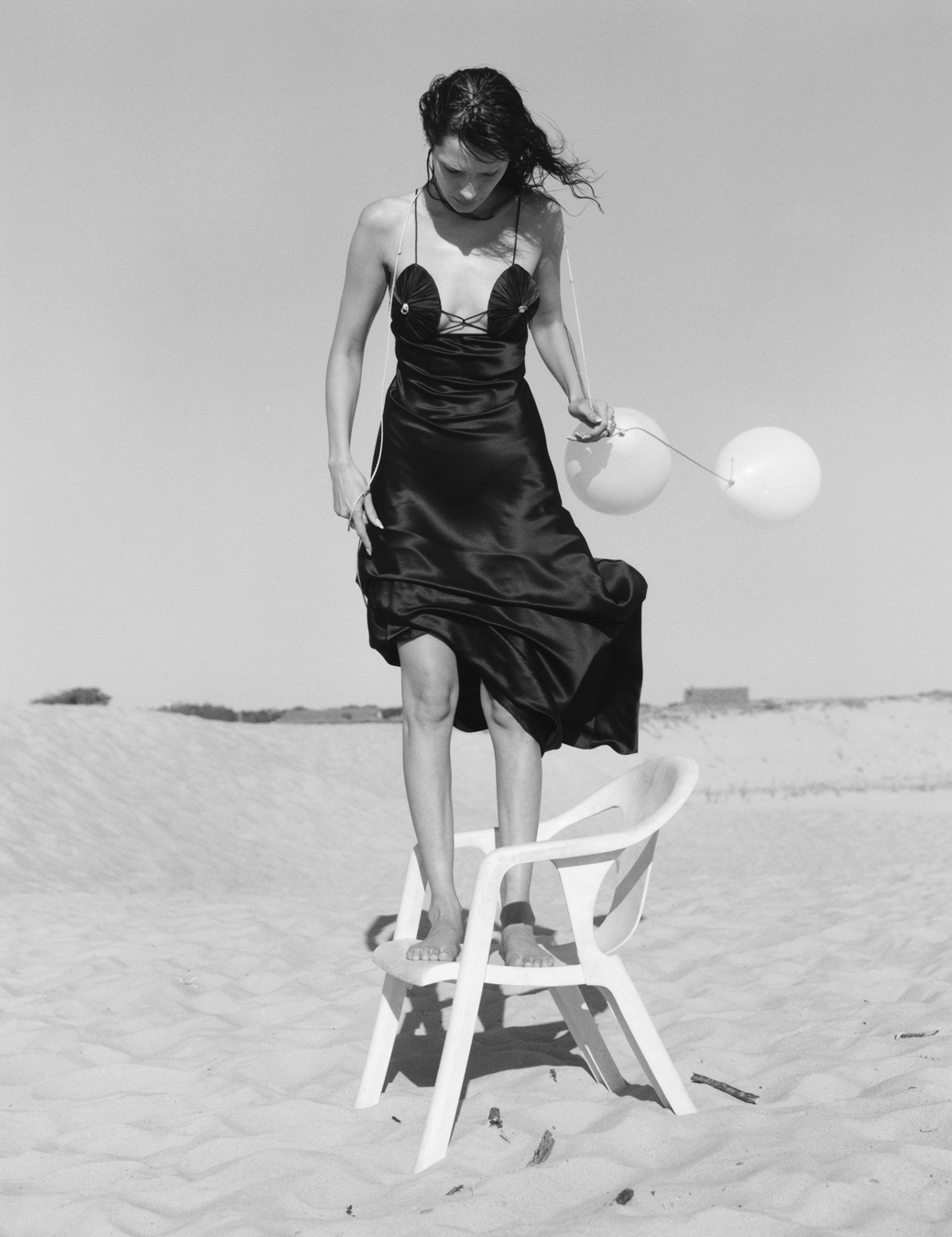
Bella lost herself for a minute, but she has started to identify the parts of her personality that made her so special in the first place. For so long, “I had to conform to other people’s versions of me,” she says. “I always based who I was and the validation of who I am on other people’s opinions of me.” Growing up on the world stage, refusing to take a moment to pause, it’s an understandable situation to have found herself in – but the isolation of the pandemic brought her back to herself; offered her a moment “to realise what I like again, what really brings me joy and what I love.”
Hindsight has given her sage advice for those looking to follow in her footsteps: “Know yourself, work on yourself, understand what you love and why you love it,” she says. “People can make up stories about me; they can form whatever version of me they want in their head. But I think the truth and the light always ends up coming out. My truth, who I really am, and what I stand for, is going to be seen.”
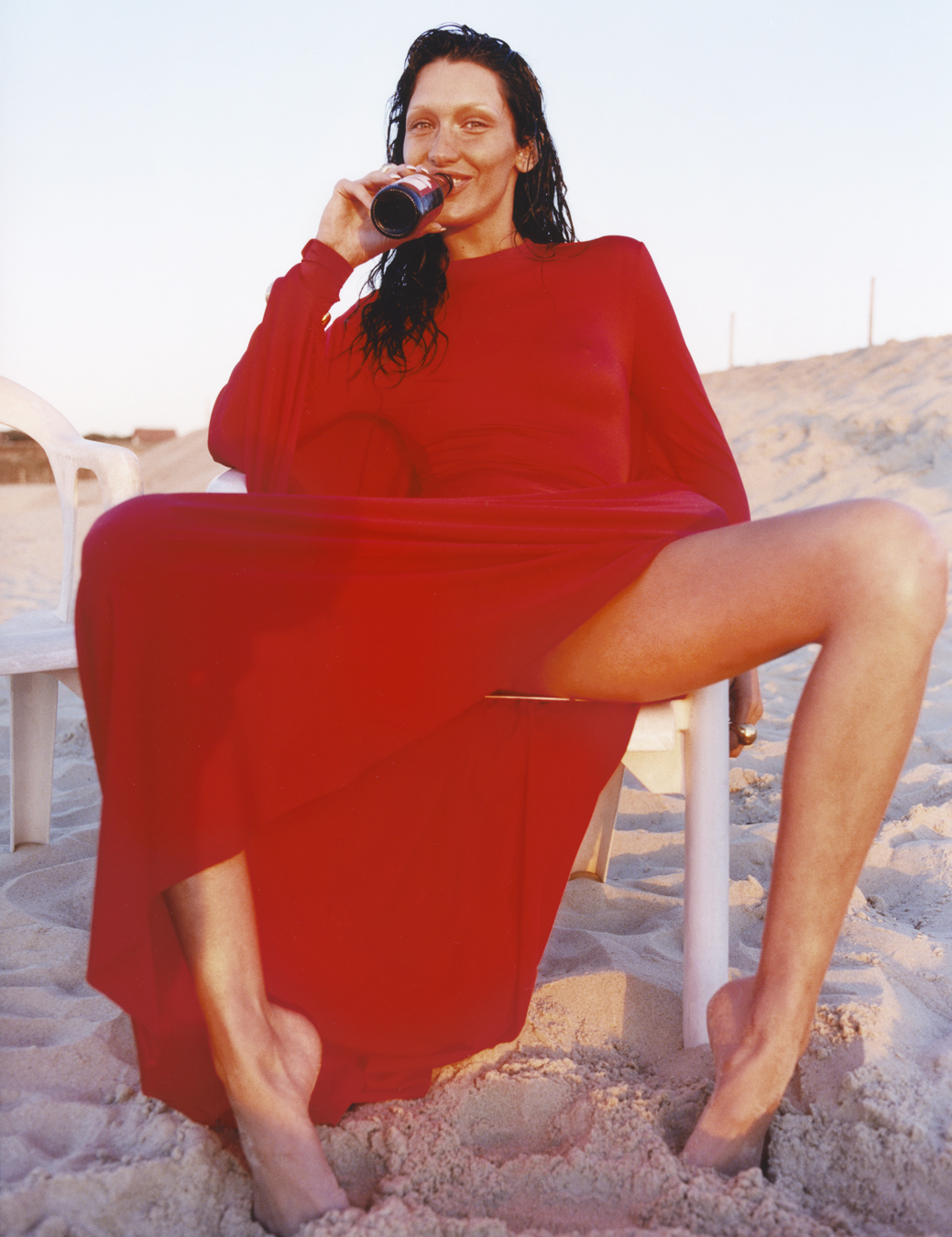

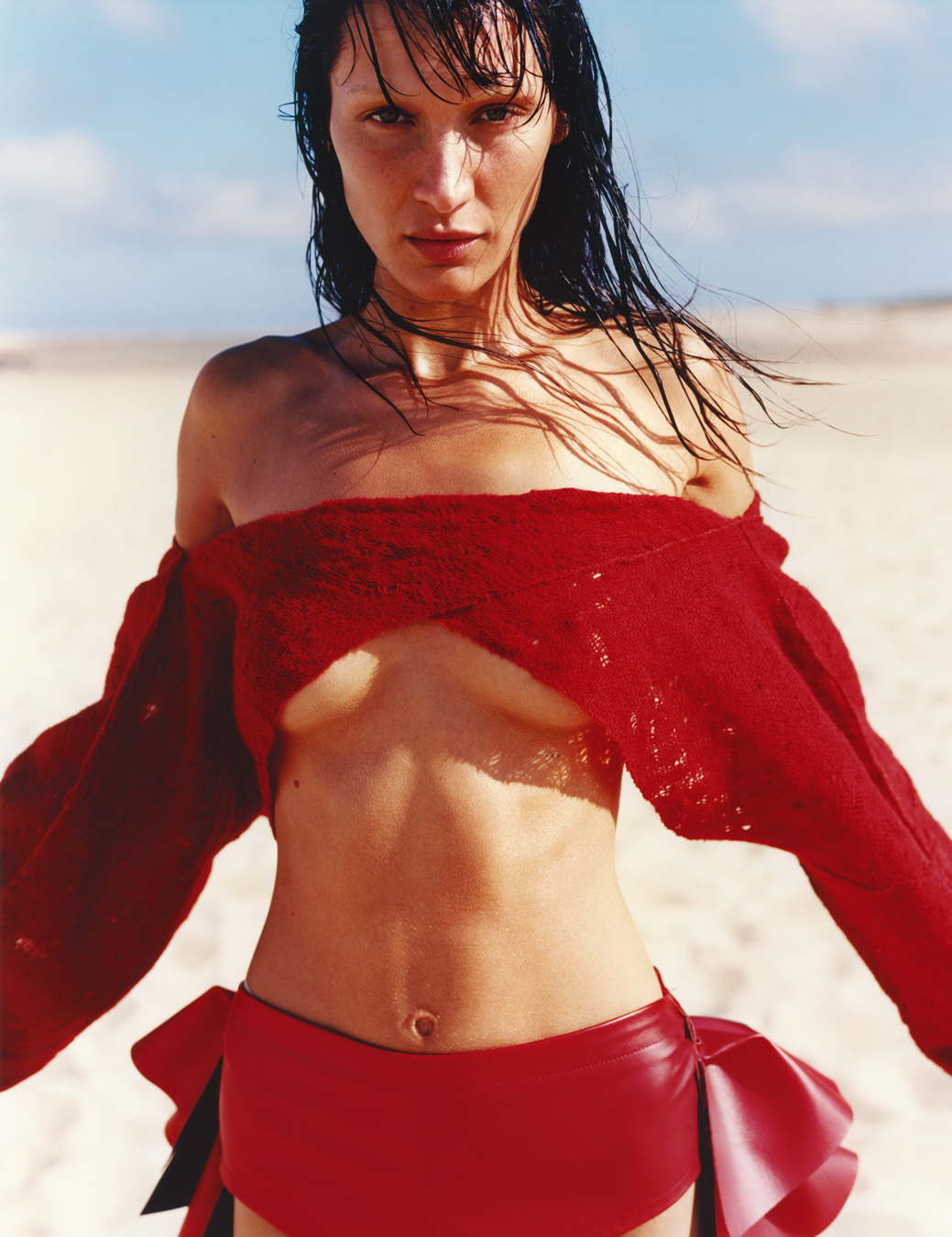

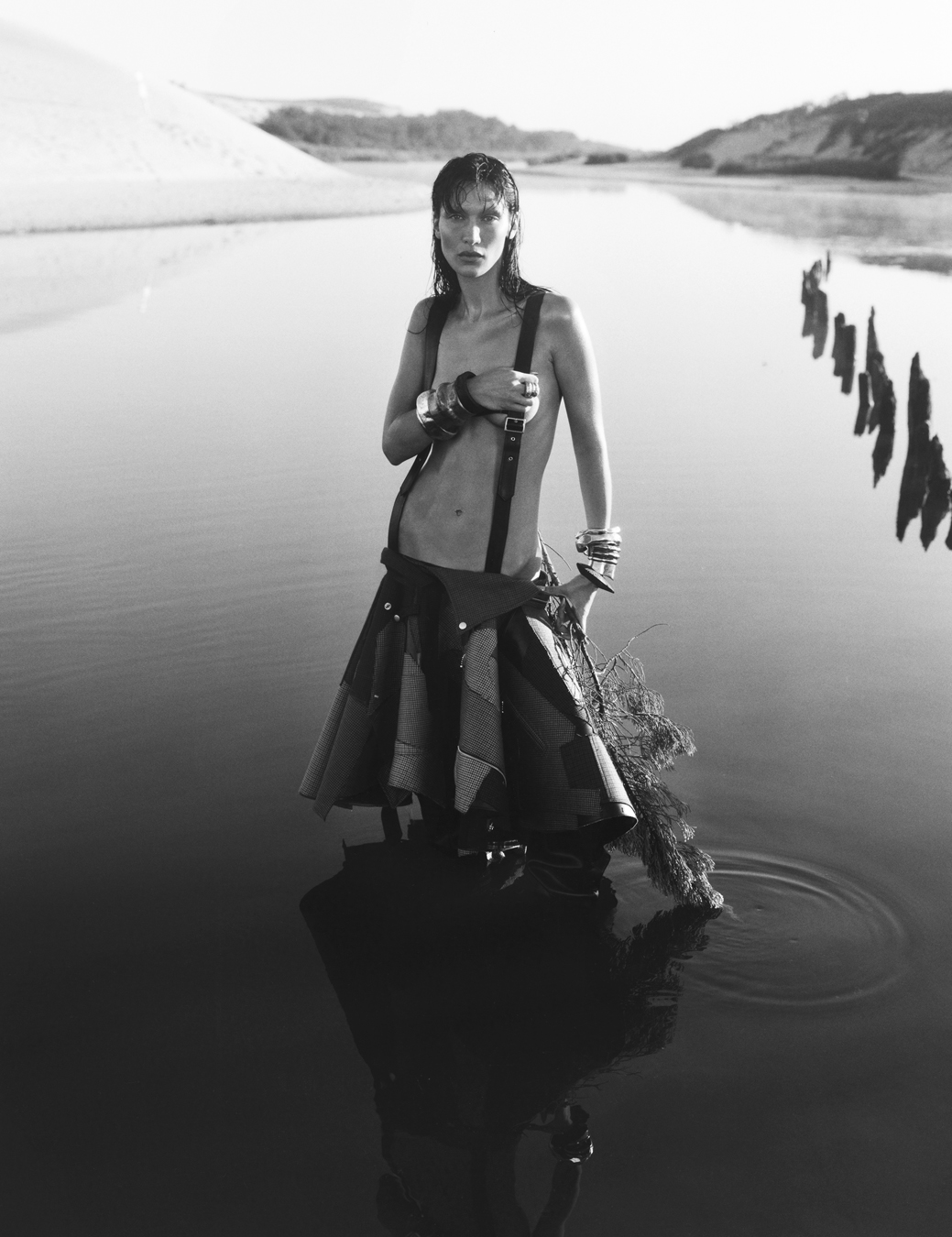
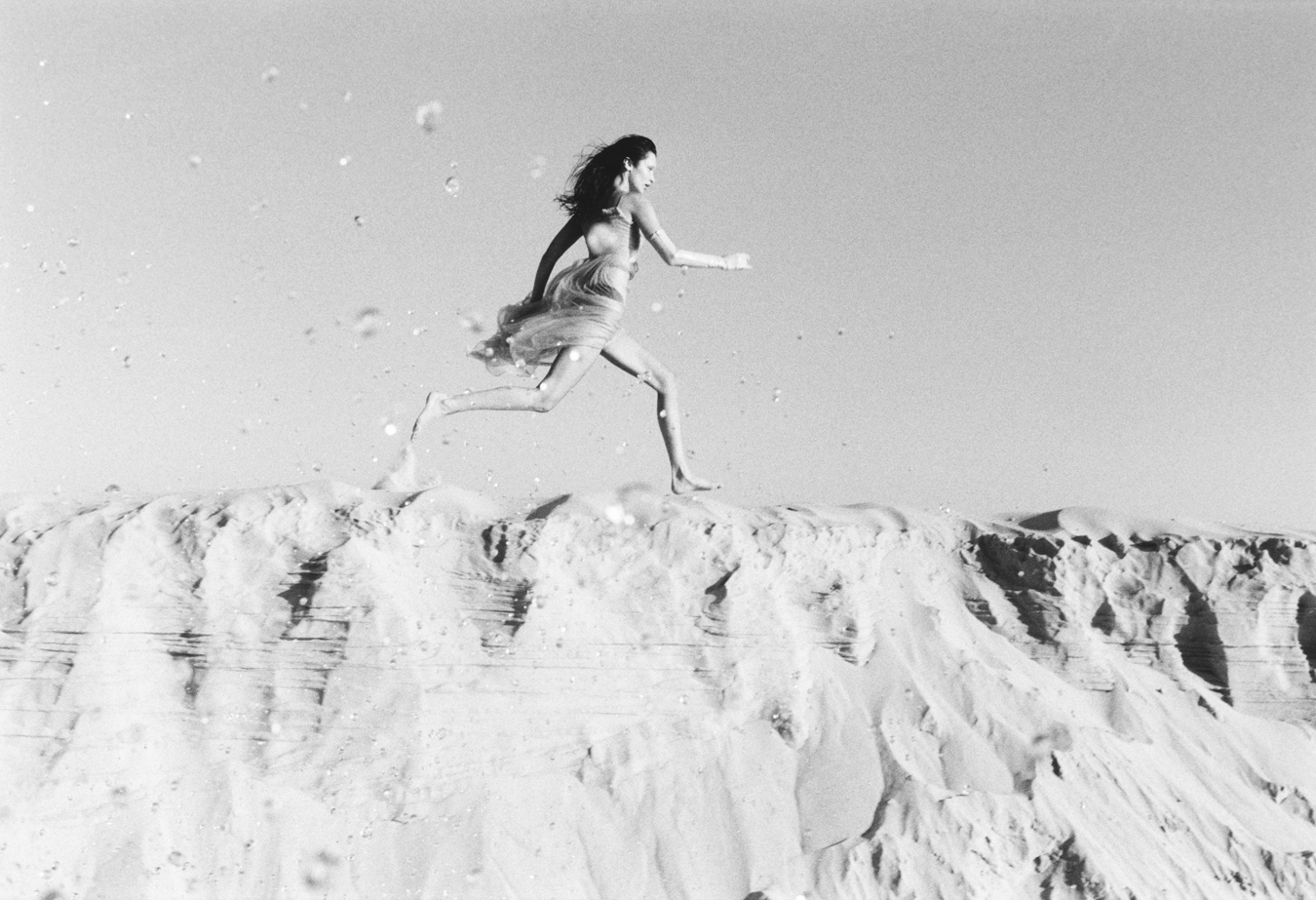

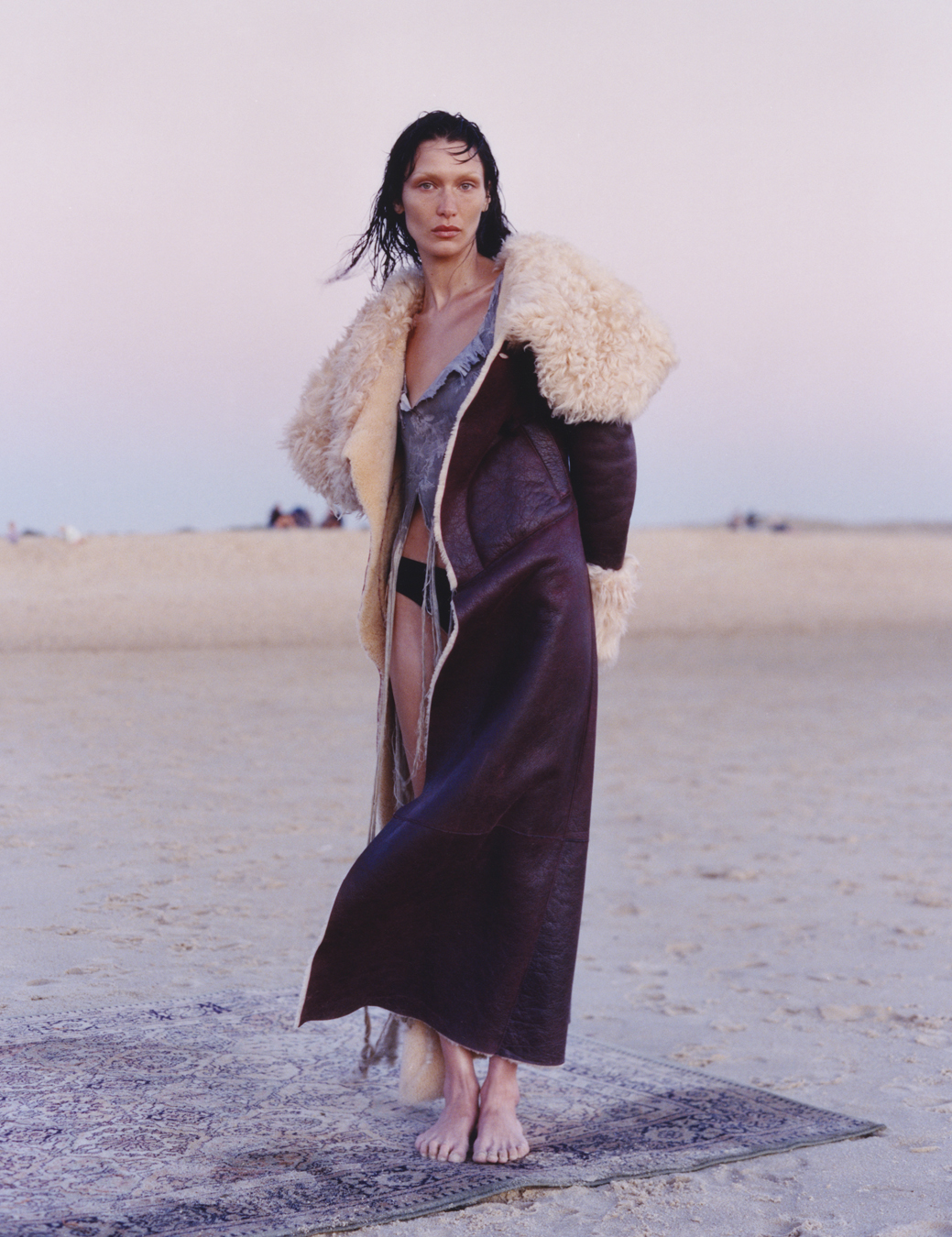
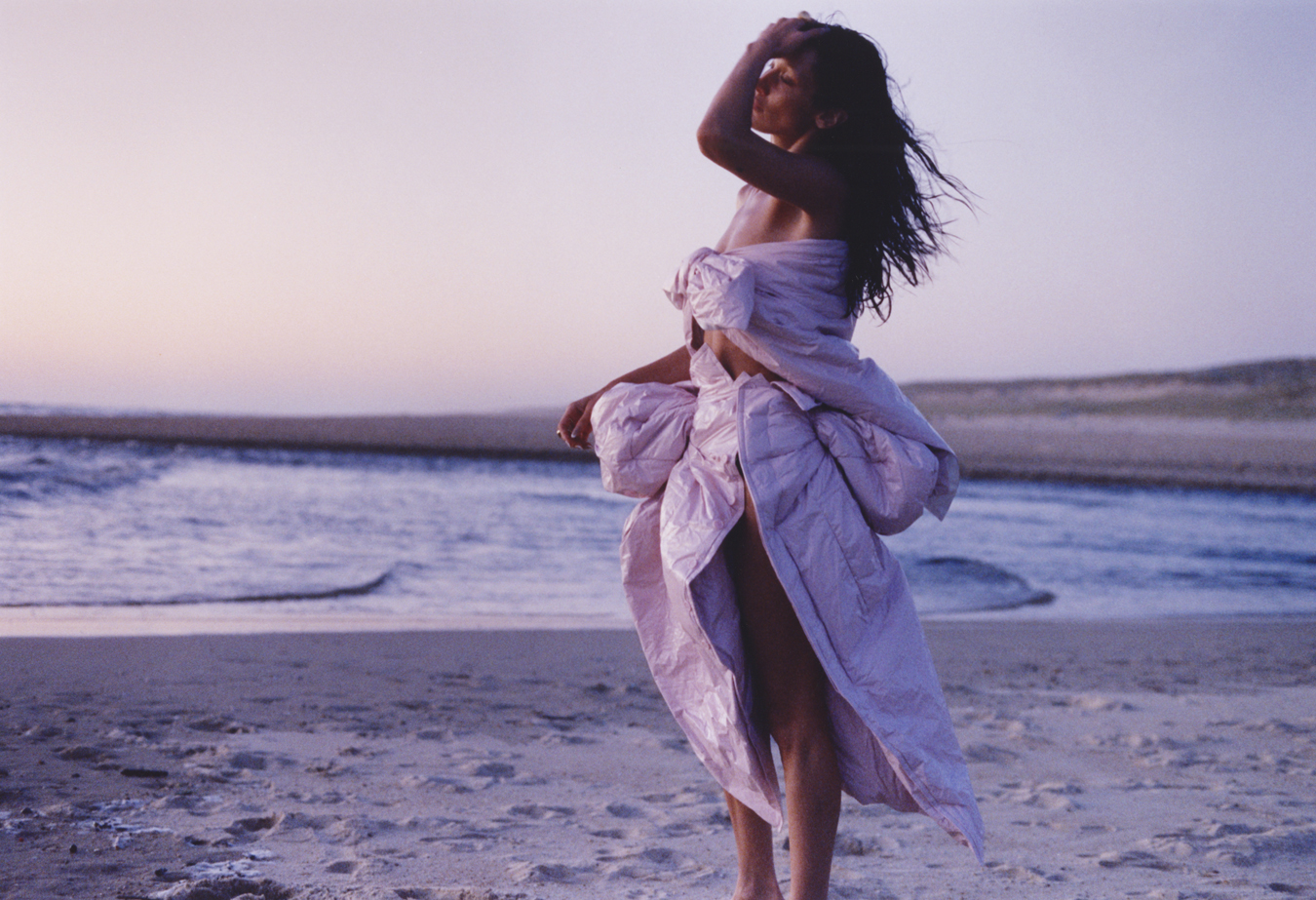


Follow i-D on Instagram and TikTok for more from the new issue.
Credits
Photography Sam Rock
Fashion director Carlos Nazario
Hair Jawara at Art Partner using Oribe
Make-up Sam Visser at Forward Artists using Dior Beauty
Set design Rafael Medeiros
Photography assistance Fred Bealet, Sammy Khoury and Thomas Aulagner
Fashion assistance Raymond Gee and Manuel Noreiga
Production SO Talents
Casting director Samuel Ellis Scheinman for DMCASTING
Model Bella Hadid at IMG
